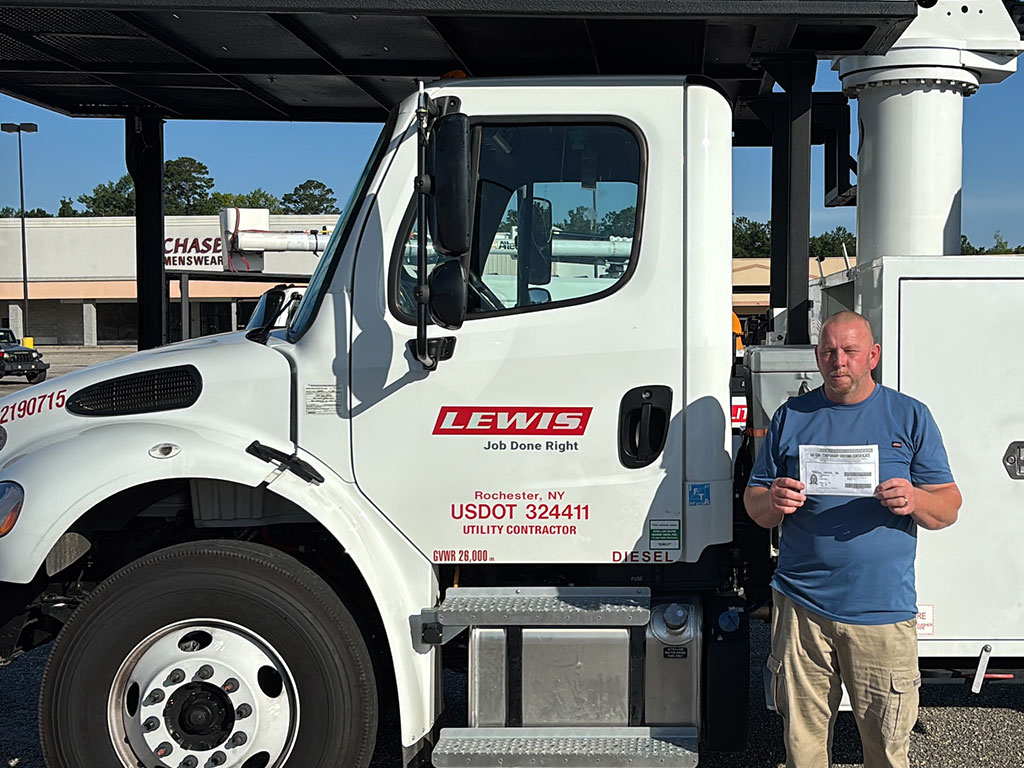Asked to name the most dangerous careers a person can have, many would likely list firefighting and police work. Unquestionably, first responders bravely put themselves in harm’s way every day in service to our communities and country. What might surprise most people is that working in utility vegetation management (UVM) can be even more dangerous.
Paving the Way to Safer Driving Through Technology & Training
 Chad Fay, Senior Vice President of Operations Support
Chad Fay, Senior Vice President of Operations Support
Consider this statement by Dr. John Ball in his 2022 article Tree Worker Safety Update by the Numbers: Another Us vs. Them: “… arboricultural operations are still among the leading industrial activities for fatal and nonfatal injuries. Compared to all industries, tree workers have at least 15 times the fatality rate (Bureau of Labor Statistics 2020) and three times the nonfatal rate (BLS 2018).”
Daily risk factors contributing to these statistics include variability of work conditions, operating from heights, contact with electrified objects, and improper usage or failure to use proper safety equipment. According to Jayme Fraser in her March 2023 article What are America’s Most Dangerous Jobs, these day-to-day threats place Tree Trimmers and Pruners in the unenviable #1 spot on a list of the 25 deadliest jobs—ahead of commercial pilots, logging workers, and roofers.

At Lewis Services, we’ve doubled-down on our safety pledge and augmented our company-wide safety culture with an unyielding commitment to driver safety.

Companies throughout the industry are combatting these sobering statistics with vigilant training, advanced Personal Protective Equipment (PPE), and the integration of Human Performance into safety practices. At Lewis Services, we’ve doubled-down on our safety pledge and augmented our company-wide safety culture with an unyielding commitment to driver safety.

The Road to Best-in-Class Safety Begins Behind the Wheel
According to DOT Compliance Manager David Darnell, safety starts in the driver’s seat. A retired law enforcement officer who served 30 years as a State Trooper before joining Lewis Services, Darnell understands firsthand the ever-present risk factors that jeopardize driver safety. Darnell asserts that checking one’s cell phone, switching radio stations, and exploring the many features of today’s sophisticated navigation systems—even for a few seconds—can have dire consequences. The National Highway Traffic Safety Administration corroborates Darnell’s statement. The agency estimates that taking one’s eyes off the road for 5 seconds (roughly the amount of time to scan a text) while traveling at 55 mph is equivalent to driving an entire football field with your eyes closed.

Jack Wiggins, Division 30 Crew Leader, recently completed Lewis' new ELDT Driving Academy program
Even when companies like Lewis establish clear expectations and standards for their own drivers, vigilance is still critical when it comes to monitoring other drivers on the road. In the past, impaired driving was typically seen at night and attributed to fatigue or alcohol. Today, with greater accessibility to substances such as CBD and prescription medications, impaired driving happens at all times of the day and is not confined to late hours.
In addition to driver behaviors, there are other safety challenges that are commonly reported in the vegetation management industry. UVM trucks are generally larger in size and operate in high traffic areas where navigation in crowded corridors can be challenging and pose risks. Poor weather conditions can also impact road safety—especially during storm response when crews may be traveling long distances in unfamiliar territories to support power restoration. Across the industry, companies are continuously taking action to mitigate factors that might compromise road safety.

Training and Technology: Forces for Good
Undoubtedly, technology can negatively impact driver safety when used improperly and unsafely. However, technological innovations designed to reinforce driver safety can create positive impact when introduced properly and implemented with fidelity.

Taking one’s eyes off the road for 5 seconds (roughly the amount of time to scan a text) while traveling at 55 mph is equivalent to driving an entire football field with your eyes closed.

The most effective ways to improve driver safety often start before the driver gets behind the wheel. Experts like Darnell point to robust driver training programs, such as Smith5Keys, that provide operators with knowledge and skills that will help them in the most challenging driving conditions. Technology devices that monitor driver behavior using in-cab AI cameras and telematics are another way to leverage data for critical insights, real-time coaching, and ongoing training. These innovative systems can identify negative behavior events and provide immediate coaching, while also recognizing and rewarding safe driving behaviors.
“Co-drivers”—the additional in-cab occupants often traveling to and from job sites with the drivers of Lewis vehicles—also participate in training and are as valuable to safe passage along roadways as are co-pilots in commercial air travel. The additional eyes, ears, and expertise provided by co-drivers increase situational awareness and provide another valuable level of safety.

Expect Continued Advancements and Innovation
Technology is ever-evolving and getting exponentially better at a rapid pace. The use of AI dashcams that observe both in-cab and external events, coupled with real-time audible driver coaching alerts, is making significant headway in increasing driver safety. Lane assist sensors are becoming more standard in many vehicles, which can provide benefits to all who share the road. At the national level, the Federal Motor Carrier Safety Administration continues to review speed limiters as a way to potentially reduce serious injuries and fatalities attributed to excessive speeds. And data-driven insights and post-trip reports may be more commonly used to identify trends and predict safety gaps based on time of day, weather conditions, and driver experience.
The key to having a proactive approach is to embrace innovation. At Lewis, we are intentional in seeking out new driver safety technologies that will advance our Best-in-Class safety culture. We appreciate the collegial commitment to safety in the UVM sector and take advantage of opportunities to engage with peers in the fleet space to share ideas, experiences, and results. For companies who are just dipping their toes into advanced technologies—consider volunteering for product pilot testing to experience the latest innovations. And to those who are further down the path—consider sharing lessons learned so that others may benefit from your leadership.
As we continuously challenge ourselves to improve our respective driver safety programs, let’s also challenge each other to embrace an industry-wide safety culture that makes the roads safer for all.

We are intentional in seeking out new driver safety technologies that will advance our Best-in-Class safety culture.




